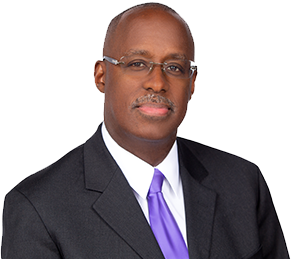
Expert witness with over 25 years of experience in cardiology
(714) 568-6600

Expert witness with over 25 years of experience in cardiology
If you have a
In order for one to become a cardiologist, one must complete medical school (4 years) to become a Medical Doctor (MD), or Doctor of Osteopathic Medicine (DO), followed by an Internal Medicine internship and residency (3 years) and subsequent specialized cardiology training in a cardiology fellowship program. Upon completion of the typically three-year cardiology fellowship program, the doctor will have achieved Level I training in the field of general cardiology and can practice general cardiology. There are three (3) levels of training in cardiology fellowships.

General Cardiologist (sometimes known as Non-Invasive cardiologist). All cardiologists who have completed a three-year General Cardiovascular fellowship program can practice general cardiology at the completion of fellowship training. Some of the duties of a general cardiologist are1:
The specific procedures commonly performed in general cardiology include ordering and interpreting cardiac studies such as stress tests, electrocardiograms (EKG), and echocardiograms. Procedures such as cardioversion, stress echocardiograms, and nuclear and treadmill stress tests are also commonly performed by cardiologists as are transesophageal echocardiograms, with the appropriate training
If the procedure requires that the cardiologist break the skin, as in cardiac catheterization, then he/she would be classified as an Invasive Cardiologist. So, if a cardiologist performs cardiac catheterization procedures for diagnosis of disease but does not perform PCI (percutaneous intervention such as angioplasty, stents, and interventional procedures), they would be classified as an Invasive Cardiologist.
This refers to the additional training in one or more areas that enable some cardiologists to perform or interpret specific diagnostic tests and procedures or render more specialized care for specific patients and conditions 1. This can sometimes be completed within the three–year general fellowship training or after fellowship training. These are areas with additional specialty board certification such as adult congenital heart disease, advanced heart failure

This level of training requires additional experience beyond the general cardiology fellowship to acquire specialized knowledge and competencies in performing, interpreting, and training others to perform specific procedures or for the trainee to render advanced, specialized care at a high level of skill. This advanced training requires at least a year of additional training outside of cardiology fellowship. The two subtypes of these advanced training programs are Cardiac Electrophysiology (treating the electrical system of the heart by invasive procedures) and Interventional Cardiology (treating the structures and arteries of the heart by invasive procedures using specialized catheters and equipment). After completion of one of these two types of training, one can become known as a Cardiac Electrophysiologist (aka EP cardiologist), or an Invasive/ Interventional Cardiologist (aka I/I cardiologist) respectively. There are some procedures that cross over into other types of cardiology subspecialists as physicians often have training in several different procedures that can cross subtypes.
For example, the author, John D. Baker M.D. FACC, FACP, FSCAI, is a Level III trained Invasive / Interventional cardiologist who performs a variety of interventional procedures such as complex angioplasty, coronary stents, rotational atherectomy and laser atherectomy and teaches other physicians in the techniques of advanced procedures such as rotational atherectomy and laser atherectomy. Dr. Baker is also skilled at implanting permanent pacemakers, which is also done by electrophysiologists. The following is a chart of some of the procedures done by the subtypes of cardiac subspecialist, with some crossover with the appropriate training.
Cardiac Catheterization (diagnostic)
Intra-aortic balloon pump placement
Swan Ganz – pulmonary artery catheter placement
Temporary Transvenous pacemaker placement
Cardiac Catheterization (diagnostic)*
Single and Dual Chamber Permanent Pacemaker Implantation and replacement*
Implantable loop recorder placement/ removal*
Intra-aortic balloon pump placement *
Swan Ganz – pulmonary artery catheter placement*
Temporary Transvenous pacemaker placement*
Coronary Angioplasty/ PTCA*
Coronary Stent including Drug Eluting stent Implantation*
Percutaneous ventricular assist device placement (i.e. Impella)*
Rotational Coronary Atherectomy (Rotablator)*
Excimer Laser Coronary Atherectomy*
TAVR (Percutaneous Aortic Valve Replacement)
Peripheral Vascular diagnostic angiography*
Peripheral vascular Interventions
Atrial septal defect and PFO closure device placement
Alcohol Septal Ablation*
Electrophysiology Study (diagnostic)
Single and Dual Chamber Permanent Pacemaker Implantation and replacement*
Implantable loop recorder placement/ removal*
Temporary Transvenous pacemaker placement*
Defibrillator Implantation
Bi-Ventricular Pacemaker and Defibrillator Implantation
Atrial Fibrillation Ablation
Atrial and Ventricular rhythm Ablation
Atrioventricular Node Ablation
Chronic Pacemaker Lead Extraction
*= Invasive/ Interventional Procedures Performed by John D. Baker, MD, FACC, FACP, FSCAI
Not all procedures on the list are performed by all cardiologists of each subtype. The above list places the procedures with the usual type of cardiologist who performs them.
Although invasive/ interventional cardiologists like Dr. Baker perform some surgeries and surgical-like procedures, it is worthwhile to mention that coronary artery bypass surgery (CABG) / open-heart surgery is NOT performed by cardiologists, although cardiologists commonly refer patients to bypass surgery and assist with management. Coronary bypass surgery or open-heart surgery is performed by a Cardiothoracic Surgeon, which has an entirely different training pathway in a subspecialty of Surgery rather than Cardiology, which is a subspecialty of
All cardiologists are trained in general cardiology and are usually able to perform core procedures such as diagnose cardiac conditions, perform consultations and manage a variety of cardiac disorders across all types of cardiology, interpret EKG’s and stress tests results, interpret echocardiographic studies, and perform electrical cardioversions, among many other tasks, some of which are listed above under Level 1 Training – General Cardiology.
Dr. John Baker is a Level III trained Invasive/ Interventional Cardiologist practicing in Orange County, California. He has served as